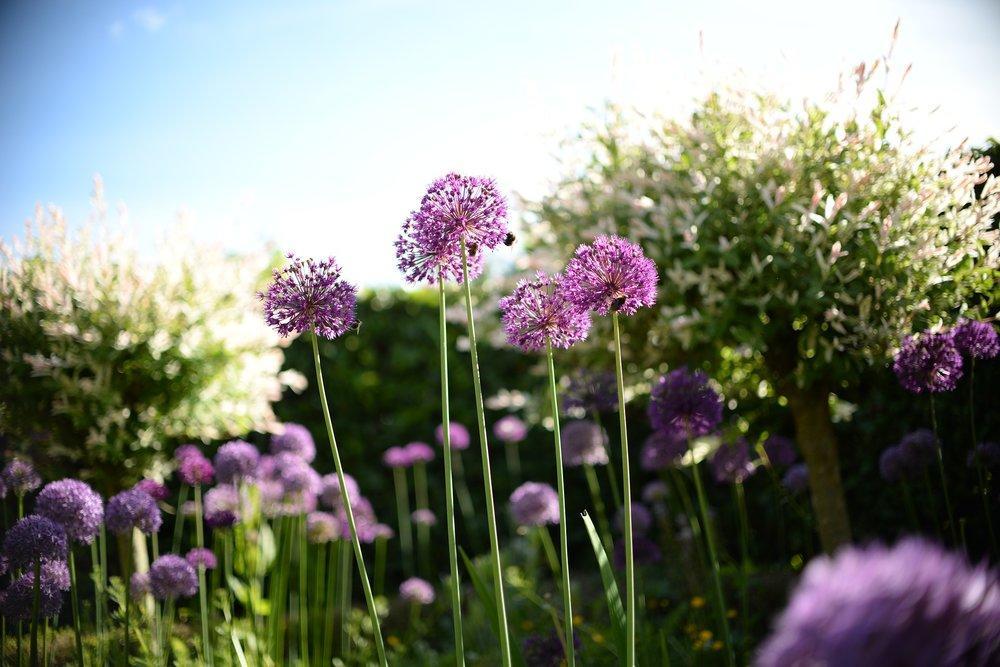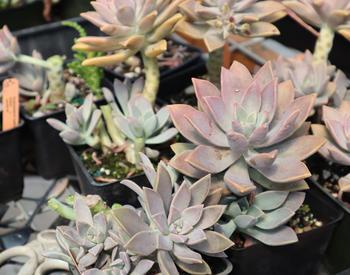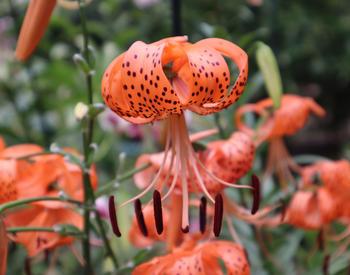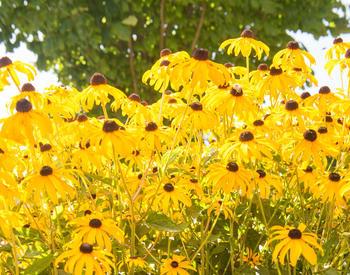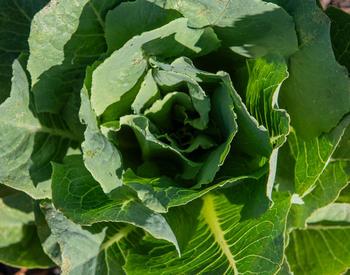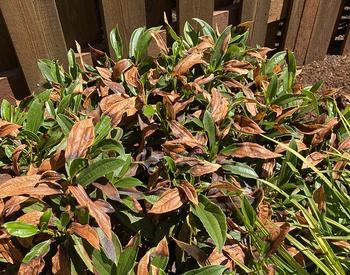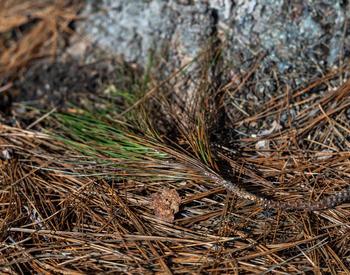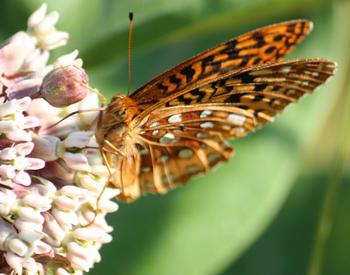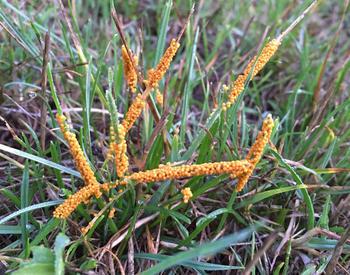Fact or fiction?
Is this statement fact or fiction?: "Wait to clean up your garden until temperatures consistently reach 50ºF or higher, in order to help conserve insects."
The claim:
Many butterflies, bees and other pollinators overwinter in the dead leaves and hollowed out stems of last year’s plants. If you clean your garden prematurely, you will literally be throwing away this year’s butterflies, bees and other beneficial pollinators.
The verdict: Mixed
Terrestrial insects overwinter in a variety of habitat types that can be generally classified as:
- Protected: beneath the soil.
- Partially exposed: within vegetation or underneath leaf litter.
- Exposed: above the ground, on vegetation or other surfaces.
It is true that if you destroy an insect’s habitat while it is overwintering, that it is highly unlikely to survive into the next season. However, the typical maintenance and cleanup tasks for spring gardens (such as pruning berries in March or cutting back ornamental grasses in April) are unlikely to broadly harm insect pollinators, with the possible exception of cavity-nesting bees.
Where do garden pollinators nest?
Soil nesting bees
Across the globe, most bee species nest in protected sites beneath the soil. For gardens located within ultra-urban landscapes, such as New York City, less than half of all bees are soil nesters. In more suburban gardens, a majority of bees are soil nesters.
For most gardens, unless you are tilling the soil as a spring garden chore (which we don’t advise, due to the negative effects of soil tilling on soil structure), most bee species should not be harmed by spring garden chores.
Cavity nesting bees
In urban gardens, bees that nest above ground in stems and other cavities are more common than they are in non-urban sites.
One of the most common bees (about 10%) of the 2,100 specimens that we found in Portland-area gardens is the small carpenter bee, Ceratina acantha. This bee nests in pithy stems, including native and cultivated Rubus (caneberry) and Sambucus (elderberry) species, and many introduced species (including Brassica, Daucus, Foeniculum and Rumex). Ceratina acantha is thus able to nest in the pithy stems of across many plant families (including carrots, mustards, buckwheats, roses and elderberries), although they seem to prefer stems that are 5–8 mm in diameter.
Research from Portland State University shows that these bees emerge in April in the Portland metro region. Thus, for cavity nesting bees in urban gardens, waiting until May to clean up garden debris that includes pithy stems would allow any overwintering small carpenter bees to successfully emerge and start their own nests in the spring.
Butterflies
Although it is possible that urban and suburban gardens offer suitable habitat for butterflies, few studies have looked at butterfly overwintering in different types of garden habitat. Studies that have counted butterflies in gardens have found that the vast majority are the ubiquitous, non-native cabbage white butterfly, Pieris rapae.
This butterfly is reported to overwinter in bark and crevices above the soil. Thus, typical gardening cleaning tasks are unlikely to harm the most dominant butterfly in urban and suburban gardens.
Temperature thresholds for insect emergence?
I tried to find the source of the suggestion that gardeners wait until it is 50oF or higher before cleaning up garden debris. The closest suggestion that I could find is a study of bat foraging in Wisconsin. This study found that bat foraging strongly coincided with insect emergence in spring, which sharply increased at 50oF.
However, it should be noted that 78% of the insects captured in this study were flies, and almost all of the flies captured were aquatic. These, obviously, would not be disrupted by spring garden maintenance, unless you are cleaning and disrupting a garden pond or stream.
What you can do to conserve garden insects
One of the best things you can do, if you want to conserve insects in the garden, is to set aside a portion of your garden that is left unmanaged, as perennial habitat. The larger the space you are able to set aside as unmanaged habitat, the more insects you will be able to host in your garden.
Keep in mind, however, that habitat set-asides will provide space for the insects that are generally desirable in a garden (such as pollinators), but may also provide space for insects that are less desirable (such as herbivores that can become garden pests).
To learn more about how you can protect pollinators in your garden, via pollinator-friendly garden designs and maintenance practices, check out Enhancing Urban and Suburban Landscapes to Protect Pollinators. Experiment, and do what works best for you. The mere fact that you’re thinking about and are aware of the importance of insect conservation in the garden is a huge step in the right direction.
References
Danforth, B. N., R. L. Minckley, J. N. Neff. 2019. The Solitary Bees: biology, evolution, conservation. Princeton University Press, Princeton and Oxford.
Fetridge, E., J. S. Ascher and G. A. Langellotto. 2008. The bee fauna of residential gardens in a suburb of New York City (Hymenoptera: Apoidea). Annals of the Entomological Society of America101: 1067-1077.
Lang, B.J., Dixon, P.M., Klaver, R.W., Widrlechner. 2019. Characterizing urban butterfly populations: the case for purposive point-count surveys. Urban Ecosyst 22: 1083–1096.
Langellotto, G.A. (2017). An analysis of bee communities in home and community gardens. Acta Hortic 1189: 491-496.
Matteson, K. C., J. S. Ascher and G. A. Langellotto. 2008. Richness and composition of the bee fauna of urban gardens in New York City (Hymenoptera: Apoidea). Annals of the Entomological Society of America 101: 140-150.
Matteson, K.C., Langellotto, G.A. 2010. Determinates of inner city butterfly and bee species richness. Urban Ecosyst 13: 333–347.
Melathopoulos , A. Bell, N. Danler, S., Detweiler, A. J. Kormann, I., Langellotto-Rhodaback, G. A., Sanchez, N. Stoven, H. and Smitley, D. 2020. Enhancing Urban and Suburban Landscapes to Protect Pollinators. Oregon State University Extension and Experiment Station Communications. EM 9289.
